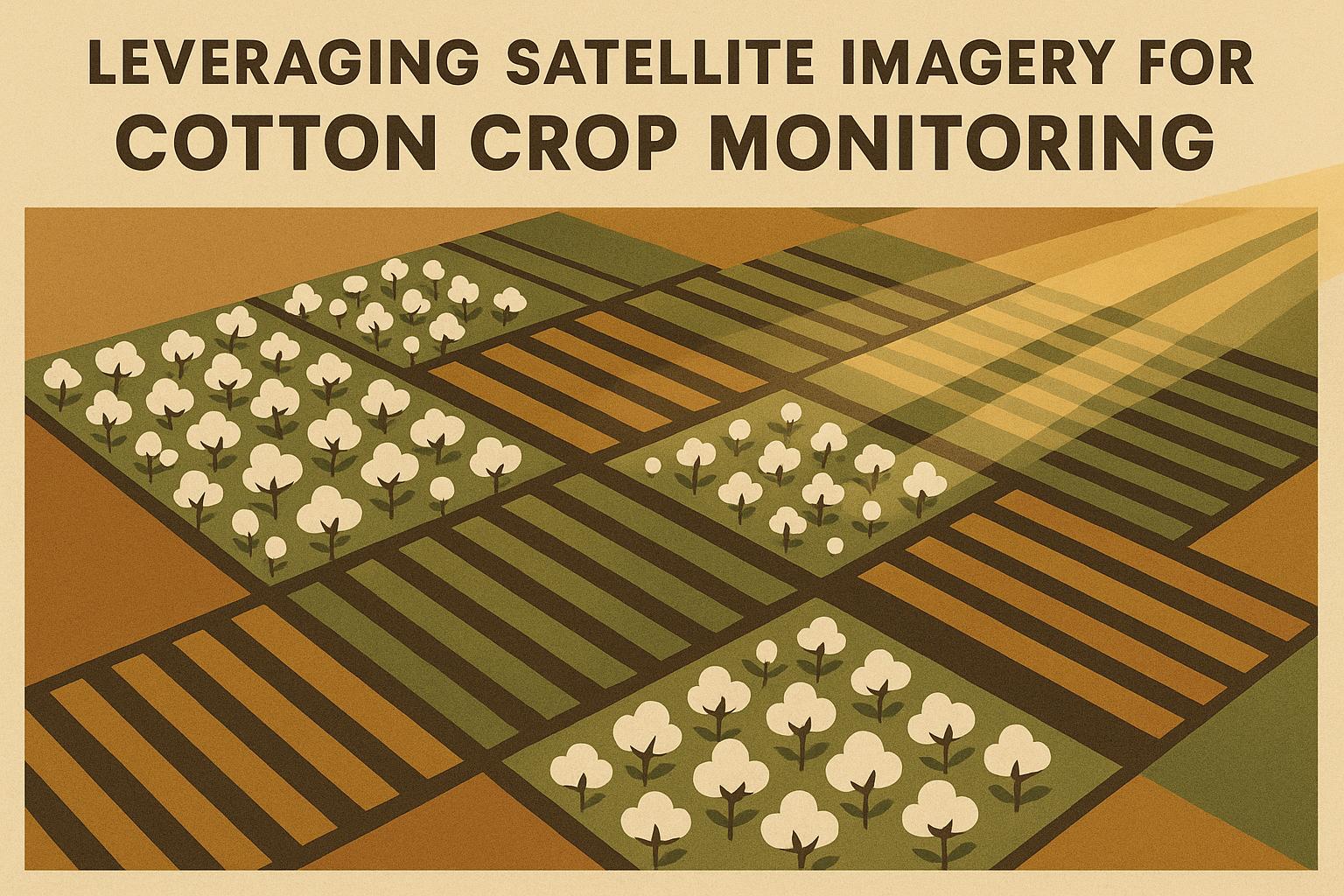Lint separation is the process of extracting cotton fibers (lint) from raw seed cotton, ensuring the fibers are clean and ready for textile production. Modern cotton gins use advanced machinery to efficiently perform this task, replacing the labor-intensive hand methods of the past.
Key Points:
- Purpose: Removes seeds and debris from cotton while preserving fiber quality.
- Preparation: Cotton is conditioned to ideal moisture levels (5–8%) and transported pneumatically.
- Cleaning: Pre-cleaning removes large debris; post-cleaning targets smaller contaminants.
- Separation Methods:
- Saw Gins: Faster, designed for Upland cotton but can damage delicate fibers.
- Roller Gins: Slower, used for longer fibers like Pima cotton to maintain quality.
- Final Steps: Lint is cleaned again, shaped into batts, and compressed into bales for shipping.
Modern ginning ensures cotton is processed efficiently while maintaining its quality for the textile industry.
Inside the Cotton Gin
Preparing Cotton for Lint Separation
To get cotton ready for lint separation, it needs to be carefully conditioned and transported within the gin. When raw cotton arrives, its moisture levels can vary significantly, so proper preparation is crucial. This step ensures the lint separation process runs smoothly and efficiently.
Moisture Conditioning
One of the key steps in preparation is adjusting the moisture content of seed cotton to an ideal range of 5–8%. Most cotton gins use two conditioning systems in sequence to achieve this balance. These systems rely on drying, cleaning, and extracting methods to remove excess moisture and any unwanted materials. This not only improves the efficiency of separating fibers from seeds but also protects the quality of the cotton.
Pneumatic Transport
Once conditioned, the cotton is moved through the gin using advanced transport systems. Pneumatic transport, which uses air pressure, is a common method in modern gins. Raw cotton is vacuumed into tubes and directed to dryers, marking the first step in the ginning process. This approach streamlines the movement of cotton while maintaining its quality.
Cleaning Cotton Before Separation
Once cotton is conditioned and transported, it undergoes a cleaning process to remove debris picked up from the field. Raw cotton often contains materials like sticks, leaves, and dirt, which can harm machinery and reduce fiber quality.
The cleaning process is done in two stages, each targeting different types of contaminants. Pre-cleaning systems handle larger debris, while post-cleaning systems focus on smaller particles that could affect the final quality of the lint.
Pre-Cleaning Systems
Pre-cleaning uses equipment like cylinder cleaners and stick machines to remove bulkier debris, such as sticks and leaves. Incline cylinder cleaners work by tumbling the cotton over rotating cylinders, allowing gravity to pull away heavier debris. Stick machines, on the other hand, use a mix of air flow and mechanical action to extract woody materials. This step is crucial because leftover large debris can damage machinery further down the line and reduce the cotton's market value.
Post-Cleaning Systems
After pre-cleaning, finer particles are addressed in the post-cleaning phase. This stage focuses on removing smaller contaminants like residual leaf trash, grass, and motes - tiny fragments of the cotton plant that pre-cleaning might miss. Even small amounts of leaf trash can compromise the quality of the cotton. For Upland cotton, standard post-cleaning systems are used, while Pima cotton - known for its longer, more delicate fibers - requires gentler, specialized cleaning methods to protect its integrity.
These thorough cleaning steps ensure that the fibers are ready for the lint separation process, maintaining their quality for further production stages.
sbb-itb-0e617ca
How Lint Separation Works
Once the cleaning process removes debris from cotton, the next step is separating the lint from the seeds. This critical operation turns raw cotton into usable lint, ready for the market, using specialized machinery designed for precision.
Cotton fibers naturally cling to seeds, so machinery must apply just the right amount of mechanical force. Too much force can damage the fibers, while too little leaves lint still attached to the seeds.
Saw Gins vs. Roller Gins
Two main technologies handle lint separation, each tailored to specific cotton types and quality needs. Saw gins use fast-spinning circular saws to grab and pull fibers through narrow slots, while roller gins rely on rough rollers and a stationary knife for a gentler separation process.
The choice between these methods impacts both the speed of processing and the quality of the resulting fibers. In the U.S., saw gins dominate due to their efficiency in processing Upland cotton, which has shorter to medium-length fibers. However, saw gins can harm the longer, more delicate fibers found in premium varieties like Pima cotton. For these, roller gins are preferred, as their gentler action preserves fiber quality and integrity.
| Feature | Saw Gin | Roller Gin |
|---|---|---|
| Mechanism | Fast-spinning saws pull lint through slots | Rough roller and stationary knife |
| Best for | Upland (short/medium staple) cotton | Pima and long-staple cotton varieties |
| Fiber Damage Risk | Higher for delicate, long fibers | Lower, gentler separation process |
| Processing Speed | High throughput, common in commercial gins | Slower but produces higher-quality lint |
| Primary Use | U.S. commercial operations, Australia | India, specialized U.S. Pima gins |
Both technologies are housed within the gin stand, where the actual separation takes place with precision engineering.
How the Gin Stand Works
The gin stand serves as the core of the cotton gin, where the separation process is executed. Seed cotton enters the gin stand and is processed into separate lint and seeds, with the mechanism varying based on whether a saw or roller system is used.
In saw gin stands, circular saws rotate and pull fibers through narrow huller ribs. These ribs allow the lint to pass through while keeping the seeds behind. The saws continuously catch and remove fibers, depositing the seeds in a separate collection area.
In roller gin stands, a rough-surfaced roller works against a stationary knife edge. As cotton is fed between the roller and the knife, the roller grips the fibers while the knife prevents seeds from passing through. This shearing action gently separates the lint from the seeds.
Both systems rely on precise engineering to function efficiently. For saw gins, the saw teeth must remain sharp and evenly spaced, and the huller ribs need exact gap measurements. In roller gins, the pressure between the roller and the knife must be carefully adjusted - too much pressure can damage fibers, while too little leaves the separation incomplete. Regular maintenance is key to ensuring that both systems operate at peak performance.
Processing and Baling After Separation
Once separated, the lint goes through additional steps to clear out any lingering contaminants and get it ready for storage and shipping.
Lint Cleaning
The process begins with a rotating brush or an air blast that removes lint from the saws, sending it into cleaning systems. Here, machines equipped with saws meticulously comb through the lint to extract unwanted materials like leaf fragments, grass, and motes. The cleaned lint is then shaped into a batt - a compact sheet of fibers. This batt moves through components lined with fine mesh or perforated metal, which filter out short fibers and dust. Once cleaned, the lint moves seamlessly into the next stage: adjusting moisture levels for baling.
Moisture Adjustment and Baling
The lint batt condenser plays a key role in bridging cleaning and baling. This equipment, covered in fine mesh or perforated metal, removes excess air from the lint and shapes it into batts, preparing it for compression. These consolidated batts are then compressed into standard bales, making them ready for storage and shipping. This compression marks the final step in turning raw cotton into market-ready lint, paving the way for its use in textile production.
Conclusion
At the core of cotton ginning lies the lint separation process. Modern gins have revolutionized the transformation of raw cotton into high-quality fiber through a series of precise steps, including moisture conditioning, pneumatic transport, cleaning, advanced lint separation (via saw or roller gins), and final cleaning and baling.
This process is finely tuned to meet the specific needs of different cotton varieties. For instance, saw gins are ideal for efficiently processing Upland cotton, while roller gins are better suited for preserving the quality of long-staple varieties like Pima cotton. By tailoring the method to the cotton type, the industry ensures that each variety is handled in a way that maximizes its market value.
Modern advancements have reshaped the cotton supply chain, leaving hand processing far behind. Today’s highly sophisticated gins operate on a massive scale, delivering efficiency and maintaining fiber quality that meets the rigorous standards of the textile industry.
The ginning process acts as a crucial bridge between cotton farmers and textile manufacturers, ensuring that only premium-quality cotton makes its way into the supply chain. Whether you're a farmer, a student of agriculture, or a professional in the industry, understanding these processes can help you make more informed decisions about cotton handling and processing.
For more resources, including a detailed directory of U.S. cotton gins and updates on the latest in ginning technology, visit cottongins.org.
FAQs
What are the pros and cons of using saw gins versus roller gins for separating lint in cotton gins?
When it comes to processing cotton, the choice between saw gins and roller gins boils down to the type of cotton and the desired balance between efficiency and fiber quality.
Saw gins are known for their speed and ability to handle large volumes, making them a go-to option for upland cotton. However, this efficiency comes at a cost - longer fibers can get damaged during the high-speed process, which might impact the overall quality of the cotton.
On the flip side, roller gins work at a slower pace but handle the fibers with care, making them perfect for longer-staple cotton varieties like Pima cotton. While they’re gentler and help preserve fiber quality, they aren’t as effective for large-scale processing as saw gins.
The decision ultimately hinges on what matters more: high output or maintaining the integrity of the cotton fibers, along with the specific type of cotton being processed.
How does moisture conditioning improve lint separation in cotton gins?
Moisture conditioning is a key factor in improving the efficiency and quality of lint separation in cotton gins. When the moisture level in cotton is adjusted before ginning, the fibers become softer and more flexible. This flexibility helps reduce breakage and ensures a smoother separation from the seeds.
Getting the moisture levels just right also reduces fiber damage, leading to higher-quality lint and more efficient processing. Striking the right moisture balance is crucial for achieving the best results during the ginning process.
Why are both pre-cleaning and post-cleaning stages essential in the cotton ginning process?
The cotton ginning process relies heavily on two key steps: pre-cleaning and post-cleaning, both of which play a vital role in delivering high-quality cotton lint.
Pre-cleaning tackles the larger debris - think leaves, stems, and dirt - before ginning even begins. This step not only protects the machinery from potential damage but also helps the entire process run more smoothly. Once the lint is separated, post-cleaning steps in to handle the finer details, removing any lingering small particles or impurities. This ensures the cotton meets the standards required for spinning and manufacturing.
These two stages work hand in hand to improve cotton quality, minimize waste, and boost the overall value of the final product.


